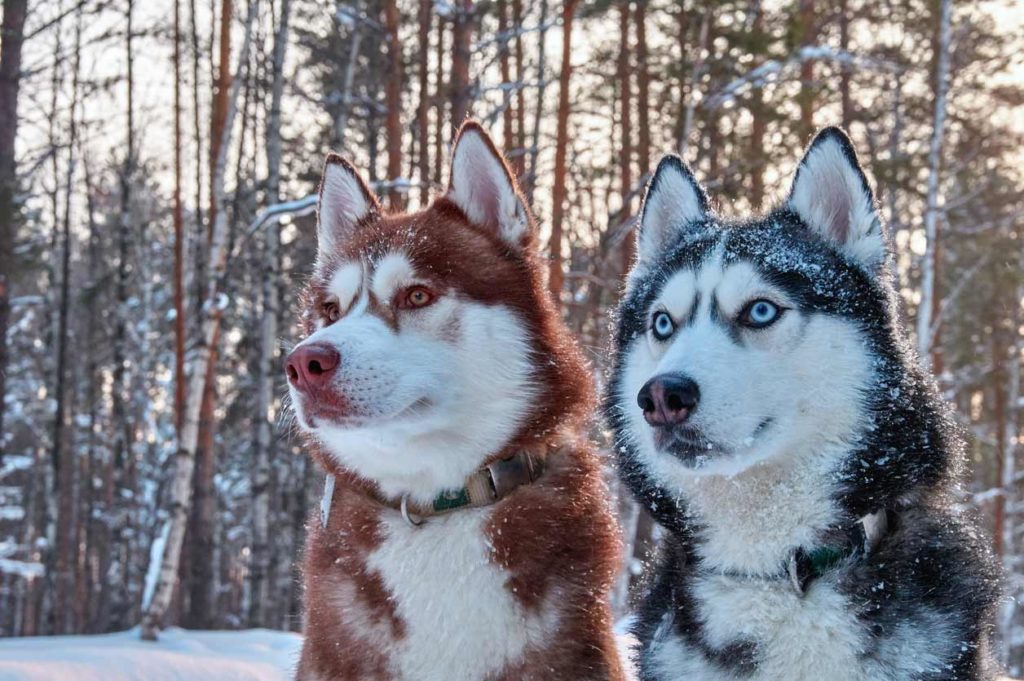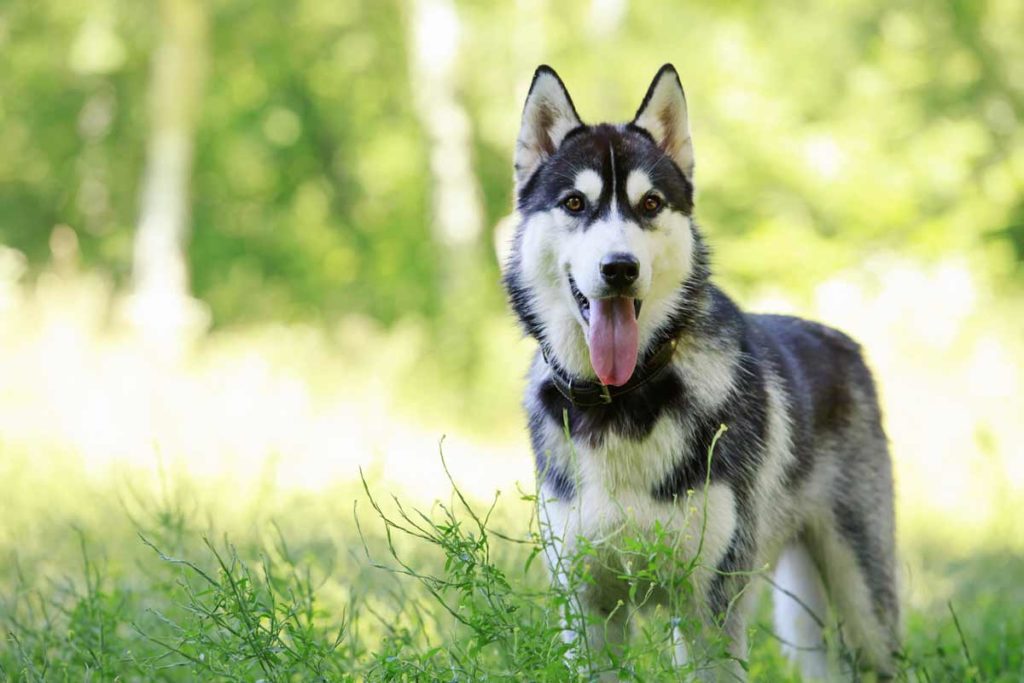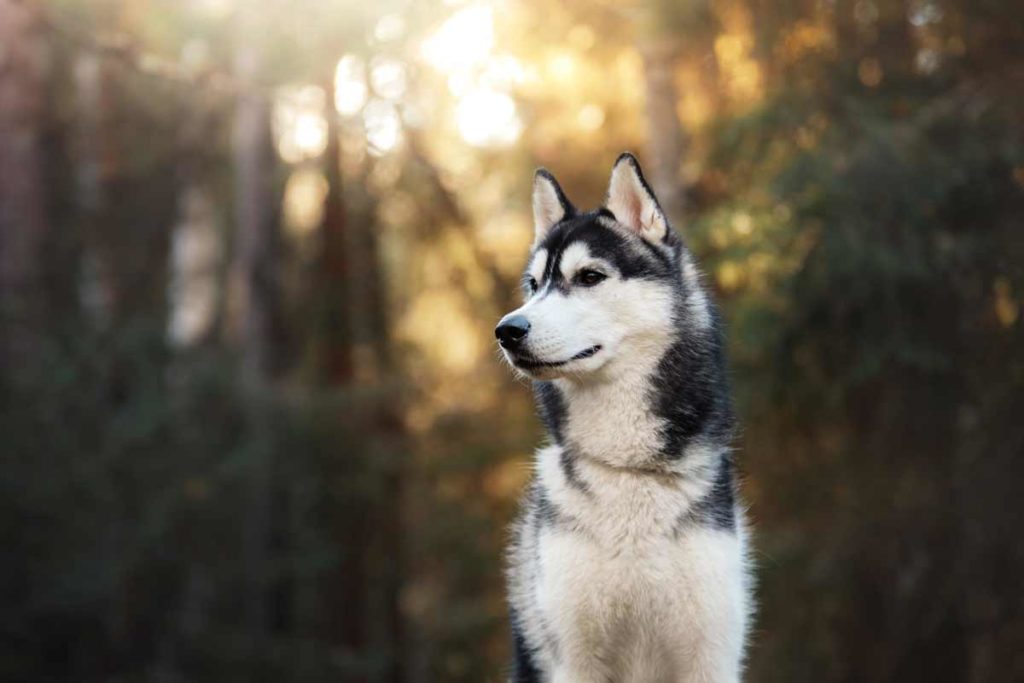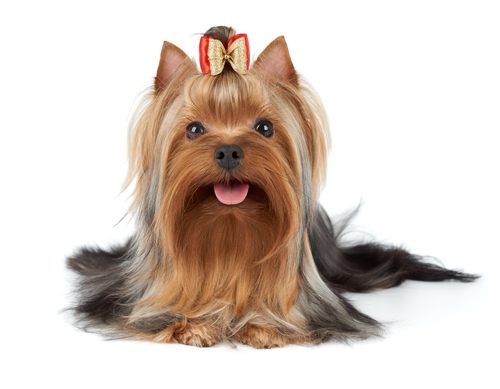
If you have ever laid eyes on an Alaskan Husky, you are sure to believe that it is the perfect pooch. But wait until you see the Siberian Husky! Friendly, dignified, and meticulous, this breed has undoubtedly won over the hearts of many with their friendly, playful, and outgoing nature. That is, of course, with a playful little twist to make them all the more alluring. However, because of its wolf-like appearance, there has been a stigma attached to huskies. Many people often misunderstand it as being a vicious creature when, in truth, it is one of the sweetest and friendliest dogs you will ever come across. However, as all Siberian Husky owners will tell you, you might want to be a little careful about letting him loose, though. The Siberian Husky puppy can be quite the fluffy Houdini and is an experienced escape artist.
Contents
Origin of the Siberian Husky
Siberian Huskies, as their name suggests, are affectionate, strong-willed wolf-likesnow dogs that originate from Eastern Siberia. Previously used by the Chukchi to pull sleds and as working dogs in cold temperatures, Siberian Huskies are known, among other things, for their exceptional looks and tremendous stamina. Besides, they are also athletic, alert, and sociable, which makes them a popular choice as home pets. They are a close relative of the Alaskan Husky, as well as Alaskan Malamutes.
History
The History of Siberian Huskies dates back to the 19th century when the Chukchis used them as sleigh dogs. Back then, both man and dog lived alongside each other, and you could say they pretty much depended on one another to survive. A century later, Siberian Huskies were imported to Alaska for use as sled dogs. However, with time, they proved themselves to be incredibly fast at sled racing and so soon enough they were renamed Siberian Huskies at a competition in the States.
Siberian Husky Care Advice for Spring
Spring is the season where everyone likes to bask in the great outdoors and enjoy long walks, beach days, hikes, and pool parties with their furry friend. However, being the playful chunks of energy that they are, it’s easy to get carried away and get hurt in the process. Therefore, here are some things you need to be extra careful about when out with your dog during spring:
- Beware of sticks
- Seasonal allergies
- Keep an eye out for bullies
Care
Nutrition
Like humans, dogs can easily over-eat and gain weight if you feed them too much. Therefore, you’ll need to be extra careful not only with what you’re feeding him but also the portions. Luckily, Siberian Huskies don’t really eat much, so they can comfortably survive on two meals a day. All you need to do is feed him a high-quality meal containing just the right amount of proteins depending on his size and level of activity. Keep in mind, however, that you should monitor his weight regularly to ensure that he is not overweight.

Grooming
Thanks to their thick, dense coat, this sled dog breed is quite high maintenance on the grooming front. You’ll need to brush their coat twice a week and remove any loose hairs while detangling any tangled manes. Keep in mind that, as with all other breeds, they also tend to shed a little more during spring and autumn so you’ll need to brush them a little more frequently. Plus, they even blow a ton of husky hair when molting which means you’ll be in for a lot more hair picking around the house.
As part of grooming, you’ll also need to ensure you check your pooch’s ears regularly and clean them as often as possible to ensure that there’s no excess buildup of wax.
Bathing Your Sibe
When it comes the bathing, the Siberian Husky breed is pretty much low maintenance on that front and will only require a bath when it’s very very necessary. In fact, most Sibe owners prefer to leave the task to a professional groomer who has all the specialized equipment needed to reduce the chances of skin infection.
Oral Hygiene
Let’s face it: no matter how much you love your pooch, his breath can be sometimes downright disgusting. Therefore, you’ll need to ensure that as part of grooming you also take care of your dog’s dental care.
Here’s a sneak peek of some things you need to do to practice good oral care:
- Regular Brushing (of Teeth)
Most vets recommend that you brush your dog’s teeth on a regular basis using a double-headed brush with bristles at 45 degrees. However, if you can do it on a daily basis, the better.
- Use Dental Sprays
There are plenty of amazing dental sprays you can use as part of dental care hygiene. However, some dental sprays are not exactly safe for dogs so you’ll need to consult with your vet beforehand.
- Visit the Vet on a Regular Basis
Now I know what you’re thinking, aren’t visits to the vet reserved for when your pooch is feeling a little under the weather?
Not quite.
Rather than waiting for him to get sick to schedule a visit, it is important to have him inspected on a frequent basis before things become fatal.
- Feed Him with More Raw Meat
Vets recommend feeding your dog raw meat so that he has to really chew on, as to help with his dental health. Raw meat also has tendons which act like dental floss to help clean between your dog’s teeth. However, you’ll want to be careful about giving a dog with immune deficiency raw meat since it might make him sick.
Exercise
Siberian Huskies are very athletic, high energy dogs and, therefore, need plenty of exercise to let off steam. They also need plenty of mental stimulation to keep them busy and to avoid the occurrence of them falling into destructive behavior. In addition to being active and energetic furballs, they are also a working breed and are their happiest when they are working. There are several AKC sponsored activities that Sibes enjoy including agility, rally, and daily walks. However, young puppies should not be overexerted because their bones and joints are still very brittle.
Health
On the health front, the Siberian Husky is a relatively healthy breed that should give you little to no problems. However, it is vital to ensure that he is screened for health problems such as cataracts and the like nonetheless.
Bleeding Disorders
Several types of bleeding disorders occur in dogs. And, most of the time, you might not even realize that your pooch is ailing because he seems pretty reasonable until a more serious injury occurs. One such disorder is Von Willebrand’s disease. Often found in Siberian Huskies, the von Willebrand’s disease is a blood clotting disorder caused by low levels of clotting protein and platelets responsible for forming the platelet plug during the clotting process.
Laryngeal Paralysis
Laryngeal paralysis is a hereditary disease in which the vocal cords become paralyzed and hang down into the airway.
Symptoms
- Coughing
- Weight loss
- Altered phonation
- Problems swallowing food
- Heavy breathing
Hip Dysplasia
If you are a dog owner, then these two little words are certainly not new to you. In fact, they are the two little words that dog owners fear most. Often characterized by decreased activity, lameness of the hind legs, reduced range of motion, looseness in the joints, and a noticeable enlargement of the shoulder muscles, hip dysplasia is a skeletal condition where the thigh bone fails to fit into the hip bone.
Epilepsy
Legs flailing in the air, neck arched, and lips tightened in a grin. Nothing could be more frightening than having to watch your pooch go through an epileptic episode. However, you and I both know that that classic convulsion is just one of many variations of seizures.
So, what is epilepsy?
Epilepsy is a hereditary disease characterized by outbursts of electrical activity scattering through the brain. These signals when propelled down the nerves create havoc in the body causing the muscles to contract repeatedly.
Generally, if your pooch has been diagnosed with epilepsy, lifelong medication is usually necessary to help keep the seizures under control. These medications are prescribed at a standard dose initially and then adjusted gradually depending on the response.
What to Do When Your Dog is Having an Episode
- Keep a safe distance. Seizing dogs can bite you by mistake.
- Do not pull his tongue.
- Using his hind legs, pull him away from furniture and staircases.
- Cover him with a blanket to reduce light and turn down sources of sound.
- If the seizure prolongs for longer than usual, place an ice pack on his spine at the back of the ribs.
- Cover him up with a blanket while transporting him to the vet.
Eye Problems
You’ve probably heard it being said before that the eyes are the windows to the soul. And the last thing that you want as dog owners is to helplessly watch as your pooch loses its vision in those beautiful almond-shaped eyes. Unfortunately, Sibes can inherit a number of different eye conditions including:
Cataracts
A cataract is an eye condition that makes it hard for dogs to see. It is characterized by opacity in the lens and is common among adult and aging dogs.
Symptoms
- Clumsiness
- Rubbing and scratching of the eyes
- A bluish, gray or white layer in the eye
Glaucoma
Glaucoma is an eye disorder that causes damage to the optic nerve that carries information from the eye to the brain.
Types of Glaucoma
- Primary open angle glaucoma
- Angle-closure glaucoma
Progressive Retinal Atrophy
Progressive retinal atrophy is a genetic issue commonly found in dogs and it is characterized by bilateral degeneration of the retina, causing progressive vision loss and even blindness.

Training
Huskies are generally very well behaved but, like all other breeds, they too could benefit from early socialization training, basic obedience, and proper mannerisms. However, they are very high maintenance dogs and can, therefore, be a bit challenging to train. You’ll need to be prepared for hours of training and exercise a lot of patience because training can be a process, especially if you are dealing with an adult Sibe. But it’s not impossible. My advice is to make the training sessions fun for both you and your furry friend so that it feels more like fun and games and less of a chore. It also helps to ensure that your pooch is in the company of his human or other dogs during training.
Dos and Don’ts of Training
Dos:
- Start the training sessions early.
- Ensure that you handle your Sibe firmly and fairly during training.
- Practice a little positive reinforcement.
Don’ts:
- Use harsh correction methods: Huskies are very sensitive and don’t respond too well to a harsh tone.
Temperament
Sibes are generally very sweet and adorable and have a mostly friendly disposition to just about anyone. However, they have a very independent spirit and therefore tend to do what they want most of the time. To get them to do what you want, you’d have to make them think that what you want them to do is in essence what they want to do.
Life Expectancy
Siberian Huskies are quite a healthy breed and can live for up to 12–15 years if well taken care of, and some live even longer than that.
Price
Exceptionally friendly, loyal, and outgoing, you’ll agree that the Siberian Husky is definitely a breed you want to have around you. However, dogs are certainly not the cheapest of things, and so you’re probably wondering, “How much does a Siberian Husky cost?”
Here’s a sneak peek into the amount you’ll have to part with:
Initial Price
On this front, there are a couple of factors that come into play. These include:
- Location
- Gender
- Lineage
- Color
However, most Huskies will generally range from around $600 to about $1,300 with superior pedigrees costing up to $6,000. If you are adopting, however, you should expect to pay anything between $350 to $550, and that’s inclusive of vaccinations, registrations, and spaying or neutering.
The Cost of Feeding a Siberian Husky
Weighing between 35 to 60 pounds, the Sibe is a medium-sized dog with a strong appetite. And, although they don’t eat much, on average, they consume between 2–3 cups of food daily, depending on their size and level of activity. Now, on that front, you’ll need to speed about $2 to $3per pound of quality food and about $55 for a 30-pound bag. Additionally, you’ll need to buy your little furry friend treats which will cost you roughly $5 to $10 a month.
Vet Expenses
Another important factor to consider is the amount of money you’ll spend at the vets. While the Siberian Husky is generally a very healthy breed, he’ll require regular checkups by the vet from time to time. Some common issues you might be visiting the vet for include:
- Deafness – $100 to $300
- Hip dysplasia–$1,500 to $6000
- Uveodermatologic syndrome–$1,000 to $3,000
- Entropion–$300 to $1,500
- Corneal dystrophy–$300 to $3,000
Other Expenses
Other than the initial cost, the cost of food, and ongoing vet expenses, other expenses include:
- Nail trims–$10 per session
- Training–$50 to $125 for hour-long sessions running for four to eight weeks
Facts About Siberian Huskies
- Huskies are one of the oldest dog breeds
According to scientific evidence, huskies date back about 27,000 years. Their good temperament was forged by their instinct to survive in harsh climates, as becoming a companion to humans during long periods of winter meant a more stable existence. Humans probably excepted Huskies because they can pull sleds and are good working dogs, not to mention that a Husky puppy is one of the cutest things imaginable.
- They have evolved for the snow
Huskies thrive in cold climates. They have a thick double Husky haircoat that has both a thick undercoat and a puffy exterior, which keeps them warm in low temperatures and furry sturdily clawed paws that give them a good grip on icy terrain.
- They have unique physical features
Huskies have icy blue eyes that match their affinity for the cold and sometimes, they’ll even have two different colored eyes where one of the eyes is almost always blue. They also come in six different shades. According to the American Kennel Club, the most common coat shades include: black and white, plain white, agouti and white, sable and white, red and white, and gray and white.
- They make great family dogs
Despite their intimidating look, Huskies are actually very sweet and friendly which makes them perfect companions to all family members. However, as with all other breeds, they require obedience training.
- They have a loud howl
Much like wolves, Huskies are also known for they loud howl which can be heard from up to ten miles away. Their instinct drives them to howl every time they want to alarm the public, which may be slightly disconcerting in urban areas but is very handy as a rescue unit, or as a part of a rescue group.
10 Things Only a Siberian Husky Owner Would Understand
- You have to keep explaining to people that it’s not a wolf but a dog.
- Although they can come across as intimidating, they make the worst guard dog ever.
- They shed a lot of fur.
- They are quite experienced escape artists, and so no fence is tall enough for this fluffy Houdini.
- You have to train them hard on obedience and mannerisms.
- They are very loud howlers. You might not even need a radio with a Sibe in the house.
- They run around the house like crazy.
- Its hard to have a beautifully landscaped lawn with a Husky in sight.
- They’ll ruin all your shoes in a heartbeat.
- They often sleep on their backs with their legs up.
Conclusion
Planning to get yourself a Siberian Husky? In this guide, we have covered everything you need to know about Sibes including their nutrition, grooming, exercise, and training needs. We hope that this information will be more than enough to help you make an informed decision.
I grew up in a household that was filled with animals. I believe that my fate as a dog-loving person was sealed in early childhood since my parents owned several dogs of varying sizes and breeds. There was no choice but to take care of and learn about dog habits and the best animal care practices — otherwise, I’d be clueless about how to go about the creatures I was surrounded by day and night.
As a life-long puppy lover, I know a thing or two about dogs and how to go about caring for them in the best way possible. Although I’m not a professionally trained dog behaviorist, trainer, or veterinarian, all of my knowledge and experience with canines comes from a place of love and a deep-rooted passion for dogs and animals in general.
Seeing as dogs kept me company throughout every stage of my life, I decided to follow a different path in my academic life and obtained a Bachelor’s and Master’s degrees in Marketing Management and Digital Advertising, which ultimately allowed me to combine my professional training and personal experience by creating the ultimate dog lover’s resource website! Along with my husband, Dave, I run MySweetPuppy for like-minded dog lovers who want to have a single, clear, and reliable information source about anything and everything related to dogs and their well-being.


